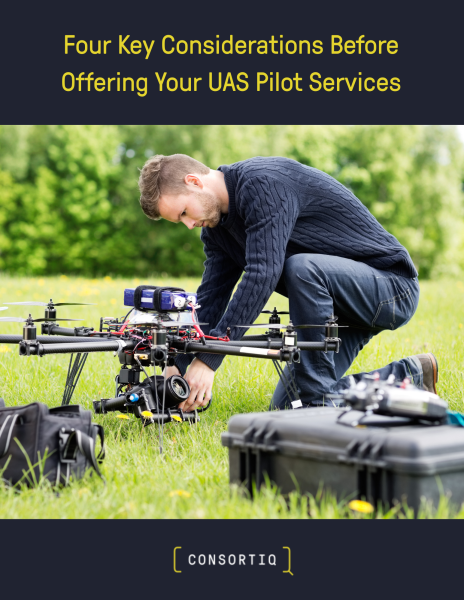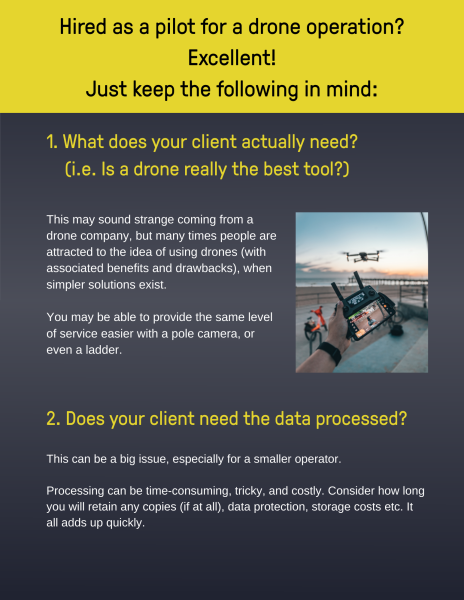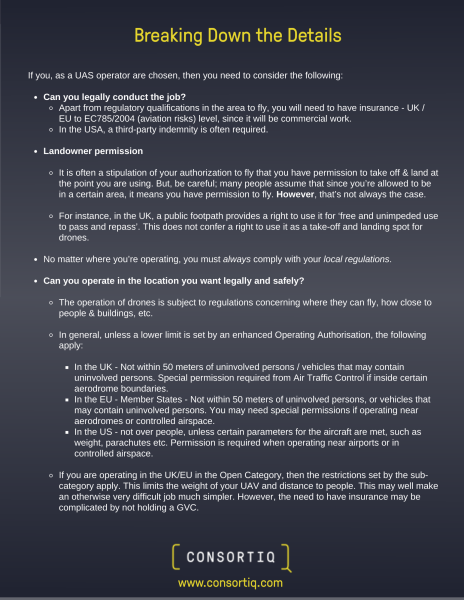Key Tips for Winter Drone Operations
Ever wonder what winter drone operations entail?
After all, when fair weather ends, flying becomes much more difficult. Even further, many jobs which are easily conducted & readily available in the summer come to an end once temperatures drop and snow starts falling.
As a Gen X kid growing up in Southern California, my experience with seasonal changes was limited. At the time, winter drone operations couldn’t have been further from my mind.
In fact, it wasn’t until I left for the Naval Academy at age 18 that I first experienced how stark a difference summer and winter can be.
When I started my drone service company, I lived in the center of Montana (Northern US; it gets cold – really cold). During that time, there were several things I learned about flying drones in locations with seasonal changes.
The elements affect drone performance, battery life, create unique lighting conditions, and may prevent you from flying altogether. But, although challenges exist, it doesn’t mean you’re entirely grounded when the snow begins to fall.
With the cold in the northern hemisphere now taking hold, let’s discuss key points to address for your winter drone operations.
We’ll look at special equipment considerations, the effects on images gathered, and a few other key points, as well.
Winter's Effects on Drone Performance
Most commercial drones use LiPo batteries. While these batteries provide many advantages, operating in cold environments is not one of them. As the temperature drops, chemical activity in the battery slows, causing degraded performance.
In freezing temperatures, battery life can be cut in half, or even stop working altogether.
There are some simple habits to adopt when protecting your batteries from the cold. First, store your batteries in a space that shields them from the elements. Ideally, keep them at average room temperature. If you are on the road, leave the batteries you’re not using in your vehicle or a container that keeps them safe.
Next, unless your drone has built-in battery-warming capabilities, turn the drone on and let it warm up for 3-5 minutes before taking off. You will lose some of your flight time, but less than if the drone flew from a cold start.
Finally, you may need to bring extra batteries to compensate for the loss in performance during cold temperatures. I like to bring double the batteries I normally need, just in case I underestimated cold temperatures.
Lighting Issues
During the winter, the skies are often cloudy and dark.
In some regions, sunlight is in short supply, while in others, it’s overly abundant. And, on top of usual sunlight, the reflective nature of snow can also affect the images and videos you collect with your drone.
There is always the risk of underexposing your images in the snow.
Keep an eye on your shutter speeds, and make sure you experiment with this first, if you haven’t already.
Also, using a clear or UV filter can help capture better images. Try adjusting the white balance if you find photos of the snow starting to look blue. The ‘cloudy’ setting typically helps to correct the blue effect.
The bottom line is to ensure you are thinking about how winter conditions change what your camera captures, and adjust accordingly.
Pilot Safety in Winter Drone Operations
I’ve been to many cold places, but I’ve never as cold as winter in the mountains of Afghanistan – especially when there was no power. In addition to equipment being pushed to its limit, winter in Afghanistan drove home the importance of caring for yourself in cold conditions.
As commercial drone pilots, we tend to sometimes focus on our equipment.
If you’re like me, your final thoughts as you head out the door are whether you have enough batteries, or if you remembered to put the SD card in your drone before leaving.
But, even more important is making sure you are safe.
Surviving in winter conditions can be a significant challenge. Conditions such as hypothermia can quickly turn a peaceful day of flying into an emergency.
Make sure you wear appropriate clothing, have plenty of food and water, and if you’re working in remote regions, let someone know who can call for help if you fail to return on time.





For a downloadable, printable PDF version of these slides, click here: Full PDF Version
It Can Be a Great Time for Training
Sometimes the weather conditions in winter ultimately prevent you from flying. I have a friend who lives in Canada, and there are numerous periods throughout the year when winter drone flights are simply out of the question.
Many drone pilots, like my friend, rely on other work to occupy such winter months. If a snow day (or days) have you grounded, consider using this time for training.
In addition to staying current on your FAA and CAA certifications, there are many other training opportunities out there.
You can learn new skills such as thermography, surveying, mapping, or even work on becoming a better photographer.
Drone simulators also exist as helpful training tools.
When winter drone operations slow down, take the time to hone your flying skills. When the weather clears, you’ll remain the flying ace you were before nasty weather set in.
Bringing it Together
In addition to how the cold affects our bodies, winter drone operations present unique concerns for commercial UAV pilots.
When flying, make sure to account for how lower temperatures affect the performance of your drone, especially the batteries and the camera. And, if the weather has you grounded, use that time to train in drone-related skills and to maintain current certifications.
And above all, never forget to take care of yourself.
—
So, which drone service is right for you? How do you get started? Should you hire out or bring your drone program in-house?
At Consortiq, we help you find a better way with drones, from consultation and program implementation to actually doing the work for you.
We offer methane detection, land surveys, facility & utility inspections, and much, much more, all around the globe.
Ready to learn more? Just complete the form below to schedule a risk-free consultation!
Are you ready to find your better way?

David Daly - Contributing Author
David Daly, is an award-winning photographer/writer and licensed (FAA) Commercial sUAS pilot. A graduate of the United States Naval Academy, David is a former Marine Corps officer with a BS in Oceanography and has earned his MBA from the University of Redlands. David has worked for Fortune 100 companies and has a background in aerospace, construction, military/defense, real estate, and technology.
Ready to Integrate Drones Into Your Organization?
Contact Us Today to Get Started!



